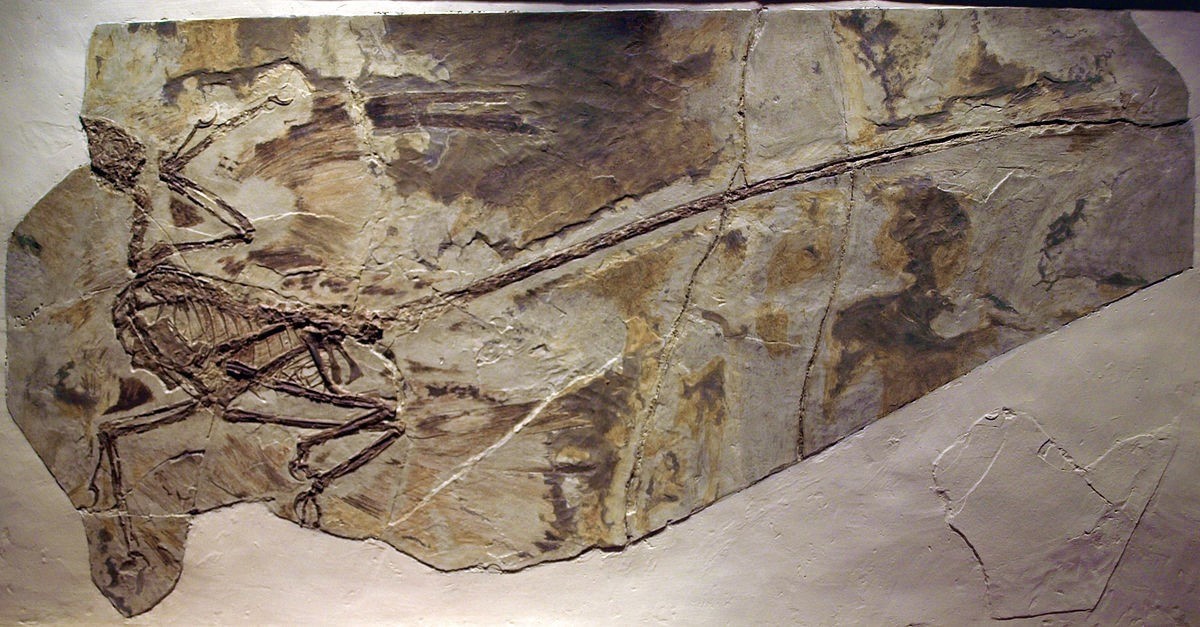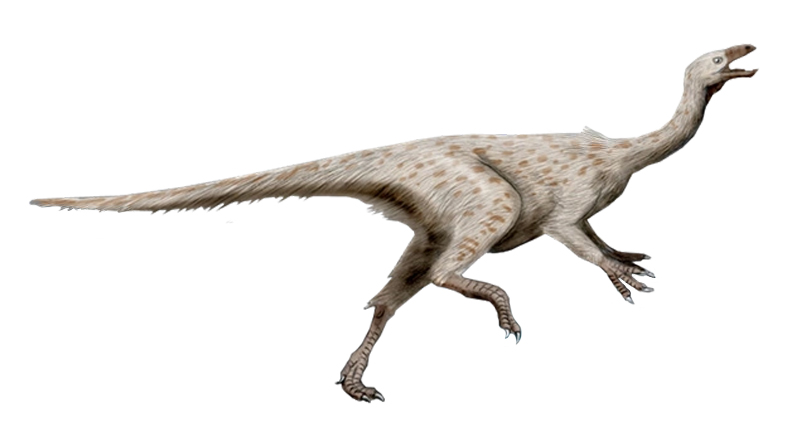|
Maniraptorans
Maniraptora is a clade of coelurosaurian dinosaurs which includes the birds and the non-avian dinosaurs that were more closely related to them than to '' Ornithomimus velox''. It contains the major subgroups Avialae, Dromaeosauridae, Troodontidae, Oviraptorosauria, and Therizinosauria. '' Ornitholestes'' and the Alvarezsauroidea are also often included. Together with the next closest sister group, the Ornithomimosauria, Maniraptora comprises the more inclusive clade Maniraptoriformes. Maniraptorans first appear in the fossil record during the Jurassic Period (see '' Eshanosaurus''), and survive today as living birds. Description Maniraptorans are characterized by long arms and three-fingered hands (though reduced or fused in some lineages), as well as a "half-moon shaped" ( semi-lunate) bone in the wrist ( carpus). In 2004, Tom Holtz and Halszka Osmólska pointed out six other maniraptoran characteristics relating to specific details of the skeleton. Unlike most other sau ... [...More Info...] [...Related Items...] OR: [Wikipedia] [Google] [Baidu] |
Middle Jurassic
The Middle Jurassic is the second Epoch (geology), epoch of the Jurassic Period (geology), Period. It lasted from about 174.1 to 161.5 million years ago. Fossils of land-dwelling animals, such as dinosaurs, from the Middle Jurassic are relatively rare, but geological formations containing land animal fossils include the Forest Marble Formation in England, the Kilmaluag Formation in Scotland,British Geological Survey. 2011Stratigraphic framework for the Middle Jurassic strata of Great Britain and the adjoining continental shelf: research report RR/11/06 British Geological Survey, Keyworth, Nottingham. the Calcaire de Caen of France, the Daohugou Beds in China, the Itat Formation in Russia, the Tiouraren Formation of Niger, and the Isalo III Formation of western Madagascar. Rocks of the Middle Jurassic were formerly (until about 1980s) in Europe called ''Dogger'' or ''Brown Jurassic''. Paleogeography During the Middle Jurassic Epoch, Pangaea began to separate into Laurasia and Gond ... [...More Info...] [...Related Items...] OR: [Wikipedia] [Google] [Baidu] |
Alvarezsauroidea
Alvarezsauroidea (from the Argentine historian, writer and physician Gregorio Álvarez) is a group of small maniraptoran dinosaurs. The group was first formally proposed by Choiniere and colleagues in 2010, to contain the family Alvarezsauridae and non-alvarezsaurid alvarezsauroids, such as '' Haplocheirus'',Choiniere, J.N., Xu, X., Clark, J.M., Forster, C.A., Guo, Y. and Han, F. (2010). "A basal alvarezsauroid theropod from the early Late Jurassic of Xinjiang, China." ''Science'', 327: 571-574. which is the basalmost of the Alvarezsauroidea (from the Late Jurassic, Asia). The discovery of '' Haplocheirus'' extended the stratigraphic evidence for the group Alvarezsauroidea about 63 million years further in the past. The division of Alvarezsauroidea into the Alvarezsauridae and the non-alvarezsaurid alvarezsauroids is based on differences in their morphology, especially in their hand morphology. Description Fossils of alvarezsauroids were described since the 1990s, with many a ... [...More Info...] [...Related Items...] OR: [Wikipedia] [Google] [Baidu] |
Ornithomimosauria
Ornithomimosauria ("bird-mimic lizards") are theropod dinosaurs which bore a superficial resemblance to the modern-day ostrich. They were fast, omnivorous or herbivorous dinosaurs from the Cretaceous Period of Laurasia (now Asia, Europe and North America), as well as possibly Africa. The group first appeared in the Early Cretaceous and persisted until the Late Cretaceous. Primitive members of the group include '' Nqwebasaurus'', '' Pelecanimimus'', '' Shenzhousaurus'', '' Hexing'' and '' Deinocheirus'', the arms of which reached 2.4 m (8 feet) in length. More advanced species, members of the family Ornithomimidae, include '' Gallimimus'', '' Struthiomimus'', and '' Ornithomimus''. Some paleontologists, like Paul Sereno, consider the enigmatic alvarezsaurids to be close relatives of the ornithomimosaurs and place them together in the superfamily Ornithomimoidea (see classification below). Description The skulls of ornithomimosaurs were small, with large eyes, above ... [...More Info...] [...Related Items...] OR: [Wikipedia] [Google] [Baidu] |
Troodontidae
Troodontidae is a clade of bird-like theropod dinosaurs from the Late Jurassic to Late Cretaceous. During most of the 20th century, troodontid fossils were few and incomplete and they have therefore been allied, at various times, with many dinosaurian lineages. More recent fossil discoveries of complete and articulated specimens (including specimens which preserve feathers, eggs, embryos, and complete juveniles), have helped to increase understanding about this group. Anatomical studies, particularly studies of the most primitive troodontids, like '' Sinovenator'', demonstrate striking anatomical similarities with ''Archaeopteryx'' and primitive dromaeosaurids, and demonstrate that they are relatives comprising a clade called Paraves. Evolution The oldest definitive troodontid known is '' Hesperornithoides'' from the Late Jurassic of Wyoming. The slightly older '' Koparion'' of Utah is only represented by a single tooth, and small maniraptoran teeth from the Middle Jurassic ... [...More Info...] [...Related Items...] OR: [Wikipedia] [Google] [Baidu] |
Dromaeosauridae
Dromaeosauridae () is a family of feathered coelurosaurian theropod dinosaurs. They were generally small to medium-sized feathered carnivores that flourished in the Cretaceous Period. The name Dromaeosauridae means 'running lizards', from Greek ('), meaning 'running at full speed', 'swift', and ('), meaning 'lizard'. In informal usage, they are often called raptors (after '' Velociraptor''), a term popularized by the film ''Jurassic Park''; several genera include the term "raptor" directly in their name, and popular culture has come to emphasize their bird-like appearance and speculated bird-like behavior. Dromaeosaurid fossils have been found across the globe in North America, Europe, Africa, Asia and South America, with some fossils giving credence to the possibility that they inhabited Australia as well. The earliest body fossils are known from the Early Cretaceous (145–140 million years ago), and they survived until the end of the Cretaceous (Maastrichtian stage, 66 ... [...More Info...] [...Related Items...] OR: [Wikipedia] [Google] [Baidu] |
Avialae
Avialae ("bird wings") is a clade containing the only living dinosaurs, the birds, and their closest relatives. It is usually defined as all theropod dinosaurs more closely related to birds (Aves) than to Deinonychosauria, deinonychosaurs, though alternative definitions are occasionally used (see below). ''Archaeopteryx lithographica'', from the late Jurassic Period Solnhofen Formation of Germany, is usually considered the earliest known avialan which may have had the capability of powered flight; a minority of studies have suggested that it might have been a deinonychosaur instead. Several older (but non flight-capable) possible avialans are known from the late Jurassic Tiaojishan Formation of China, dated to about 160 million years ago. Definition Most researchers define Avialae as branch-based clade, though definitions vary. Many authors have used a definition similar to "all theropods closer to birds than to ''Deinonychus''."Weishampel, David B.; Dodson, Peter; Osmólska, ... [...More Info...] [...Related Items...] OR: [Wikipedia] [Google] [Baidu] |
Ornithomimus Velox
''Ornithomimus'' (; "bird mimic") is a genus of Ornithomimosauria, ornithomimid Theropoda, theropod dinosaurs from the Campanian and Maastrichtian ages of Late Cretaceous Laramidia, Western North America. ''Ornithomimus'' was a swift, bipedal dinosaur which fossil evidence indicates was covered in feathers and equipped with a small toothless beak that may indicate an omnivorous diet. It is usually classified into two species: the type species, ''Ornithomimus velox'', and a referred species, ''Ornithomimus edmontonicus''. ''O. velox'' was named in 1890 in paleontology, 1890 by Othniel Charles Marsh on the basis of a foot and partial hand from the Denver Formation of Colorado. Another seventeen species have been named since then, though almost all of them have been subsequently assigned to new genera or shown to be not directly related to ''Ornithomimus velox''. The best material of species still considered part of the genus has been found in Alberta, representing the species ''O. ed ... [...More Info...] [...Related Items...] OR: [Wikipedia] [Google] [Baidu] |
Bird
Birds are a group of warm-blooded vertebrates constituting the class (biology), class Aves (), characterised by feathers, toothless beaked jaws, the Oviparity, laying of Eggshell, hard-shelled eggs, a high Metabolism, metabolic rate, a four-chambered heart, and a strong yet lightweight Bird skeleton, skeleton. Birds live worldwide and range in size from the bee hummingbird to the common ostrich. There are over 11,000 living species and they are split into 44 Order (biology), orders. More than half are passerine or "perching" birds. Birds have Bird wing, wings whose development varies according to species; the only known groups without wings are the extinct moa and elephant birds. Wings, which are modified forelimbs, gave birds the ability to fly, although further evolution has led to the Flightless bird, loss of flight in some birds, including ratites, penguins, and diverse endemism, endemic island species. The digestive and respiratory systems of birds are also uniquely a ... [...More Info...] [...Related Items...] OR: [Wikipedia] [Google] [Baidu] |
Dinosaur
Dinosaurs are a diverse group of reptiles of the clade Dinosauria. They first appeared during the Triassic Geological period, period, between 243 and 233.23 million years ago (mya), although the exact origin and timing of the #Evolutionary history, evolution of dinosaurs is a subject of active research. They became the dominant terrestrial vertebrates after the Triassic–Jurassic extinction event 201.3 mya and their dominance continued throughout the Jurassic and Cretaceous periods. The fossil record shows that birds are feathered dinosaurs, Evolution of birds, having evolved from earlier Theropoda, theropods during the Late Jurassic epoch, and are the only dinosaur lineage known to have survived the Cretaceous–Paleogene extinction event approximately 66 mya. Dinosaurs can therefore be divided into avian dinosaurs—birds—and the extinct non-avian dinosaurs, which are all dinosaurs other than birds. Dinosaurs are varied from taxonomy (biology), taxonomic, ... [...More Info...] [...Related Items...] OR: [Wikipedia] [Google] [Baidu] |
Coelurosauria
Coelurosauria (; from Greek, meaning "hollow-tailed lizards") is the clade containing all theropod dinosaurs more closely related to birds than to carnosaurs. Coelurosauria is a subgroup of theropod dinosaurs that includes compsognathids, tyrannosauroids, ornithomimosaurs, maniraptorans, and over the recent years, megaraptorans (Although position within the clade is unclear). Maniraptora includes birds, the only known dinosaur group alive today. In the past, Coelurosauria was used to refer to all small theropods, but this classification has since been amended. Most feathered dinosaurs discovered so far have been coelurosaurs. Philip J. Currie had considered it likely and probable that all coelurosaurs were feathered. However, several skin impressions found for some members of this group show pebbly, scaly skin, indicating that feathers did not completely replace scales in all taxa. Anatomy Bodyplan The studying of anatomical traits in coelurosaurs indicates that the last c ... [...More Info...] [...Related Items...] OR: [Wikipedia] [Google] [Baidu] |
Clade
In biology, a clade (), also known as a Monophyly, monophyletic group or natural group, is a group of organisms that is composed of a common ancestor and all of its descendants. Clades are the fundamental unit of cladistics, a modern approach to taxonomy adopted by most biological fields. The common ancestor may be an individual, a population, or a species (extinct or Extant taxon, extant). Clades are nested, one in another, as each branch in turn splits into smaller branches. These splits reflect evolutionary history as populations diverged and evolved independently. Clades are termed ''monophyletic'' (Greek: "one clan") groups. Over the last few decades, the cladistic approach has revolutionized biological classification and revealed surprising evolutionary relationships among organisms. Increasingly, taxonomists try to avoid naming Taxon, taxa that are not clades; that is, taxa that are not Monophyly, monophyletic. Some of the relationships between organisms that the molecul ... [...More Info...] [...Related Items...] OR: [Wikipedia] [Google] [Baidu] |
Paraves
Paraves are a widespread group of theropod dinosaurs that originated in the Middle Jurassic period. In addition to the extinct dromaeosauridae, dromaeosaurids, troodontidae, troodontids, Anchiornithidae, anchiornithids, and possibly the scansoriopterygidae, scansoriopterygids, the group also contains the Avialae, avialans, which include diverse extinct taxa as well as the over 11,000 species of living birds. Basal members of Paraves are well known for the possession of an enlarged claw on the second digit of the foot, which was held off the ground when walking in some species. A number of differing scientific interpretations of the relationships between paravian taxa exist. New fossil discoveries and analyses make the classification of Paraves an active subject of research. Description Like other theropods, all paravians are bipedal, walking on their two hind legs. The teeth of basal paravians were curved and serrated, but not blade-like except in some specialized species, suc ... [...More Info...] [...Related Items...] OR: [Wikipedia] [Google] [Baidu] |










